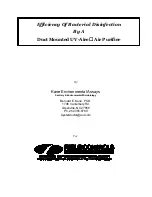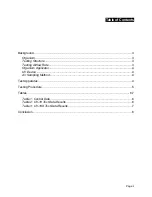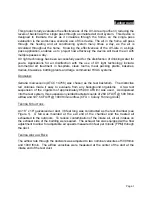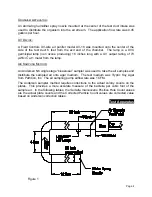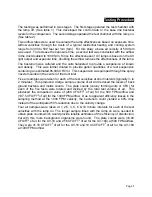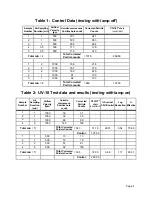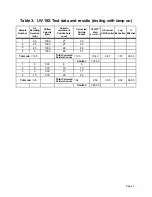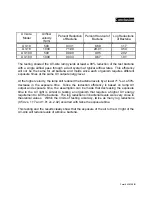
Page 3
Background
This product study evaluates the effectiveness of the UV-Aire air purifier in reducing the
levels of bacteria with a single pass through a simulated air duct system. This device is
designed to irradiate the air as it circulates through the home, so the single pass
evaluation is the worst-case scenario use of this device. The air in the home will pass
through the heating and air conditioning system many times a day, as the air is
circulated throughout the home. Knowing the effectiveness of the UV-Aire in a single
pass application, enables us to project how effectively the device will treat the air with
multiple passes a day.
UV light technology has been successfully used for the disinfection of drinking water for
years. Applications for air disinfection with the use of UV light technology include:
commercial air treatment in hospitals, clean rooms, meat packing plants, bakeries,
dairies, breweries, bottling plants and large commercial HVAC systems.
O
RGANISM
:
Serratia marcescens
(ATCC 14756) was chosen as the test bacterium. The distinctive
red colonies made it easy to evaluate from any background organisms. A raw test
suspension of the organism of approximately 95,000 CFU/ml was used. As dispersed
into the test system, this suspension yielded bacterial counts of 269 CFU/ft
3
@ 500 ft/min
airflow and 107.5 CFU/ft
3
@ 1000 ft/min airflow. (CFU = Colony Forming Units)
T
ESTING
S
TRUCTURE
:
An 18” x 18” galvanized air duct, 38 feet long was constructed as the test chamber (see
Figure 1). A fan was mounted at the exit end of the chamber and the treated air
exhausted to the outdoors. To reduce contamination of the intake air, all air intakes on
the exhaust side of the building were sealed. The exhaust fan was equipped with a flow
adjustment to allow for adjustable air speeds measured in feet per minute (FPM) through
the duct.
T
ESTING
A
IRFLOW
R
ATE
:
The airflow rate through the ductwork was adjusted to two nominal velocities of 500 ft/min
and 1000 ft/min. The airflow velocities were measured at the center of the duct at the
intake end of the test duct.

